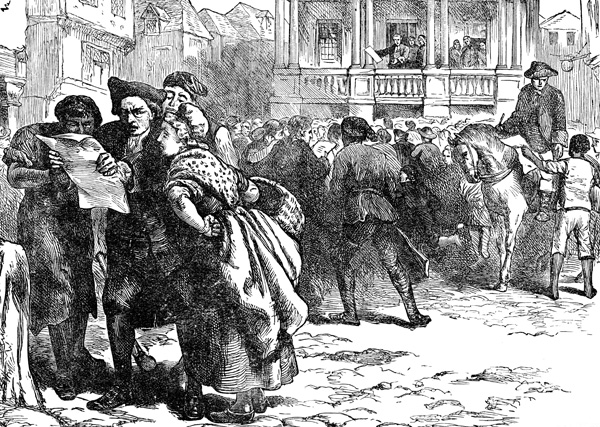We are implementing the Common Core Reading Standards this
year, which has caused some major revision of units—and not just revision as in
add a bit of this here and a bit of that there, but re-vision as in totally re-thinking how to approach our units. We
rewrote our novel unit so that it shifted from a social justice theme
inquiry to a fantasy genre focus. We are basing the fantasy unit on the
Teacher’s College Grade 8 Reading Units of Study from 2011 (still hoping new
reading units will come out for middle school this year).
There are some major shifts in our new unit because of the
CCSS Reading standards, many more shifts than we had to make in our writing
units last year. Here are a few that stand out and how we dealt with them.
R.8.2 Determine
a theme or central idea of a text and analyze its development over the course
of the text, including its relationship to the characters, setting, and plot;
provide an objective summary of the text.
We decided to keep the social
justice thematic questions from the previous unit, because they work with
fantasy as well:
- To what extent does power or the lack of power affect an
individual?
- When should an individual stand up for what s/he believes in and
what is the best way to do this?
- How do subtle issues of gender, race, class,
and power function in society?
These questions analyzing “power and resistance”
became the theme to track. We introduced a new technology tool, Lucidcharts,
as a way to track characters, setting, and plot across the book. Lucidcharts
is part of the Google suite of applications, so the flowcharts and other
graphic organizers that students develop can be shared with others in their
Book Club. As the group moves through the book, they can collaboratively add on
to their Charts and use them as talking points during their discussions.
R.8.5
Compare and contrast the structure of two or more texts and analyze how the
differing structure of each text contributes to its meaning and style.
R.8.9
Analyze how a modern work of fiction draws on themes, patterns of events, or
character types from myths, traditional stories, or religious works such as the
Bible, including describing how the material is rendered new.
 |
| image from amazon.com |
 |
| image from Gareth Hines wesbiste |
We are working with these two
standards together. Fantasy novels, including science fiction dystopian
stories, draw upon a long literary tradition. We are using a model text, The Last Book in the Universe by Rodman
Philbrick, to introduce these ideas. This book has classic literary character
types: hero, mentor, sidekick, damsel in distress, as well as structure: a quest. We will have
students look for similar character types and plot structures in their books.
The model text also draws upon The
Odyssey for some of its plot events: people who escape into a dream world
(Lotus Eaters), a character who is “blinded” in his one “eye” (Cyclops), a band
of boys who act like animals (Circe’s Island), a gang of beautiful women who
are merciless (the Furies), a journey via a Pipe that used to carry water
(Odysseus’ journey across the sea). Over
the course of the unit, we will present other traditional stories, such as
Hercules, and ask students to compare their stories to the characters and
structures of the traditional ones. Rich discussions in Book Clubs will bring
forth the analysis portions of these standards as students make connections
between their book and the traditional tales.
R.8.7 Analyze
the extent to which a filmed or live production of a story or drama stays
faithful to or departs from the text or script, evaluating the choices made by
the director or actors.
This seems like a “stand-alone”
standard to me, and I question why the authors of the CCSS deemed this
important enough to include in its “top 10” reading standards. All of the other
reading standards are applicable to a variety of texts and genres, and in multiple units and lessons. I supposed it’s a nod to the importance of media literacy in
the 21st century; however, it still seems like a “one off” lesson to me. Nevertheless, it is a reading standard and so
we must address it. While planning, I drew heavily upon Christy Rush-Levine's article on the Choice Literacy site, "Embracing Standards in Creative Ways."
 |
| movie produced by Learning Corporation of America, 1982 |
Since
our novel unit uses a Book Club structure, we have six different books going,
and not all of them have a film version. Neither does our model text, so we
needed to approach this one a little differently (see—one-off!). We decided to linger
with the model text we used in our recently completed Literary Essay unit: “All
Summer in a Day” by Ray Bradbury. Fortunately, there was an old film version of
the story made in the 1980s. It deviated quite a bit from the plot of the
original story, including extending the ending, which shifted the theme. Before
watching the film, we did a quick look at some of the “director’s choices”
available while making a film. Using A Quick Guide for Beginners: Movie Aesthetics by StopMo Wiki, we went over some film-making moves like focus, frame, flux, and sound, and thought about how
authors also try to use those same moves but with words. Next, students made a
quick t-chart with Same and Different so they could take notes as they watched
the movie. They also pulled out the story so it was in front of them.
As we
watched the movie, I stopped at the end of the exposition--which was very
different, and we discussed why the directed added so many school scenes and
whether the essence of the story was still coming through. I stopped at the climax, and we discussed how
the addition of a character allowed for the main character to say all that
“inner thinking” aloud. And at the end, I asked whether students felt the film
version, which was very different than the written version, stayed true to the
story and why.
It was
a rich lesson, and fun for the students. And now I can “tick” it off my
standards list.
The other five reading standards are also being addressed, but they didn't take too much shifting. Of course we are asking for text evidence to support their interpretations. Of course we are looking at author's craft and noticing things like allusions, irony, and suspense. Of course we are noticing how dialogue and plot events move the story forward. These are things that we addressed, maybe not to this level or specificity, in past reading units. But the four above took a lot of thinking and rewriting to incorporate into our novel unit. The unit is more rigorous because of these, and it is exciting to read fantasy with new eyes.
Does anyone else think the text vs. film standard is a stand-alone standard? Are there good resources to draw on for explaining "themes, patterns of events, or character types" from traditional literature? I'm in new territory here, and any suggestions are welcome!
 I'm loving Google Classroom. I set up an assignment, I attach documents, and I give each student a copy of the Google doc to use which is already named and put into a folder for the student and me. No longer are Google docs "lost" because they didn't get placed into a folder. No longer do I get shared on 23 "Untitled Documents" or "Fantasy Story" documents without knowing who it belongs to. No longer do I send out a group email with attachments. Everything is organized and right at everyone's fingertips.
I'm loving Google Classroom. I set up an assignment, I attach documents, and I give each student a copy of the Google doc to use which is already named and put into a folder for the student and me. No longer are Google docs "lost" because they didn't get placed into a folder. No longer do I get shared on 23 "Untitled Documents" or "Fantasy Story" documents without knowing who it belongs to. No longer do I send out a group email with attachments. Everything is organized and right at everyone's fingertips.































